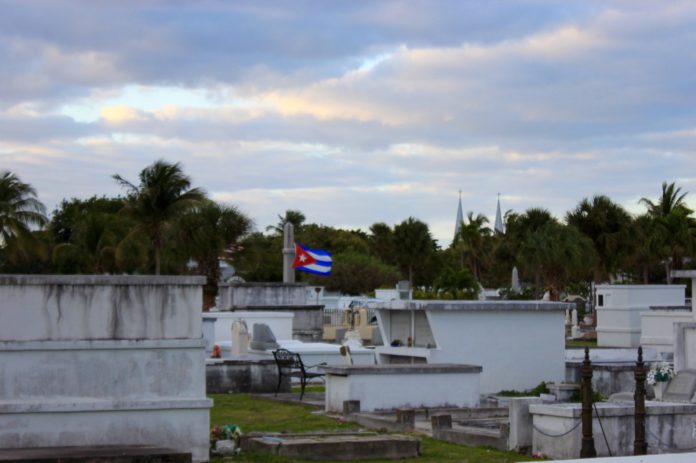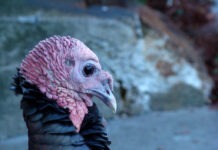Headless goats, chickens and pigeons washed up on Boca Chica road last week. Eeeww, right? The Monroe County Sheriff’s office immediately recognized the hallmarks of the Santería religious ritual of animal sacrifice. But Santería’s belief in animal beheading isn’t dissimilar to the hope and dreams of modern life. Like playing the same lottery numbers or the butcher providing Kosher meat, these sacrifices give faith to practitioners that they can achieve wealth, good health and for Santero, supernatural powers.
Santería is a complex religion. Its origins date back African slaves who were forced to the Caribbean mainly Cuba, Dominican Republic and Puerto Rico. In order to avoid religious persecution, they blended the Roman Catholic Saints with their own deities, the Orishas. It is referred to as a syncretistic religion, meaning the merging of opposing beliefs. With the influx of Cubans over the past century into South Florida, it seems inevitable to witness evidence of Santería.
In order to worship their Orishas and Saints, its believers (Santeros) must obey orders, be initiated, ordain priest and priestesses, and ultimately, perform certain rites. This will provide them protection from evils such as ill health, poverty and influence but also gain predictive powers of the future.
Like most faithful of varying religions, Santeros make offerings to the Orisha in order to provide the deities “Vital Cosmic Energy” or Ashé. The deities will take Addimu, cooked foods, or Iso guí, fruit offerings, but nothing quite compares to the energy or power of the Eyebale, blood sacrifice.
The Santero won’t just sacrifice any animal, no lemurs or iguanas will be hurt, but ordinary farm animals such as sheep, goats, pigeons, chickens, pigs, calf, fish and maybe even a turtle need to watch out. A trained Santero will sever the animal’s carotid artery causing it to pass out before dying. The worshippers will eat the remaining body if the sacrifice was made for a new initiate or asking for forgiveness from an Orisha thus ingesting the healing powers of the meat. But if an animal was sacrificed for a “purification” ritual meaning getting rid of some bad juju or devil curse, then the animal’s body would absorb the problems and jinxes rendering it quite distasteful.
Most likely the animals were disposed of along Boca Chica in the ocean and the tide took an unfortunate turn washing the animals back to shore.
While it is not a prevalent problem in the Keys, Father John Baker of The Basilica of St. Mary Star of the Sea takes issue with modern Santería because people have to pay a fee associated with the religion.
“Making people do things with the blood of animals, promising something you can’t fulfill is manipulation. It is not a faith but a moneymaker at the expense of someone hurting. It is taking advantage of people in need and in fear,” said Father Baker.
St. Mary’s has found its share of candles and statues used in worship but has no association with the Santeria practice.
Russell Brittain, Sexton of the Key West Cemetery, is familiar with Santeria’s leftovers.
“We find headless chickens, Saints’ candles, bags of eggs, coins and marbles left in the gates. It’s been awhile, maybe it is coming back.”
























